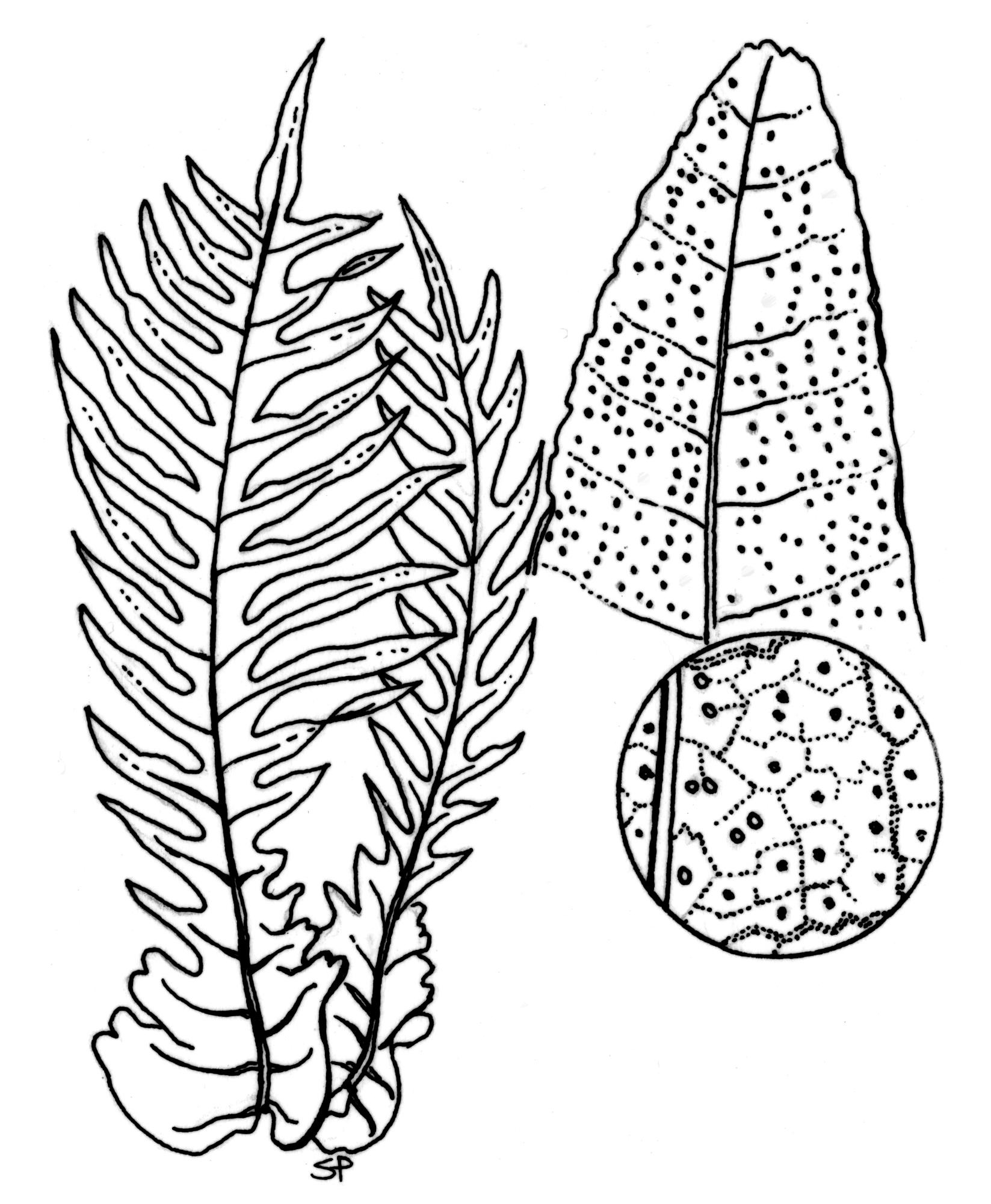
Greek aglaos - bright, magnificant, morphos - form; referring to the impressive growth habit of this genus.
Large epiphytic ferns with fronds having basal nest-like humus-collecting region; mostly used in horticulture for tubs and hanging baskets. Rhizome fleshy, covered with narrow scales. Sterile and fertile fronds similar or different. Fronds of 2 kinds, the upper ones divided once, leathery, usually fertile with narrowed segments, the lower fronds large and humus-collecting; veins netted. Segments fused at the base; midrib and main veins raised on the segment surface. Sori round, in specialised narrowed fronds or on the face of the segments. Indusia absent.
c. 10 species from the tropics, mostly Asia with a centre of distribution in Malesia.
Spores or division.
Lower nest-like region not comprised of separate fronds but formed from the expanded basal parts of the main fronds; cf. Drynaria.
Source: (1995). Polypodiaceae. In: . Horticultural Flora of South-eastern Australia. Volume 1, Ferns, conifers & their allies. The identification of garden and cultivated plants. University of New South Wales Press.
